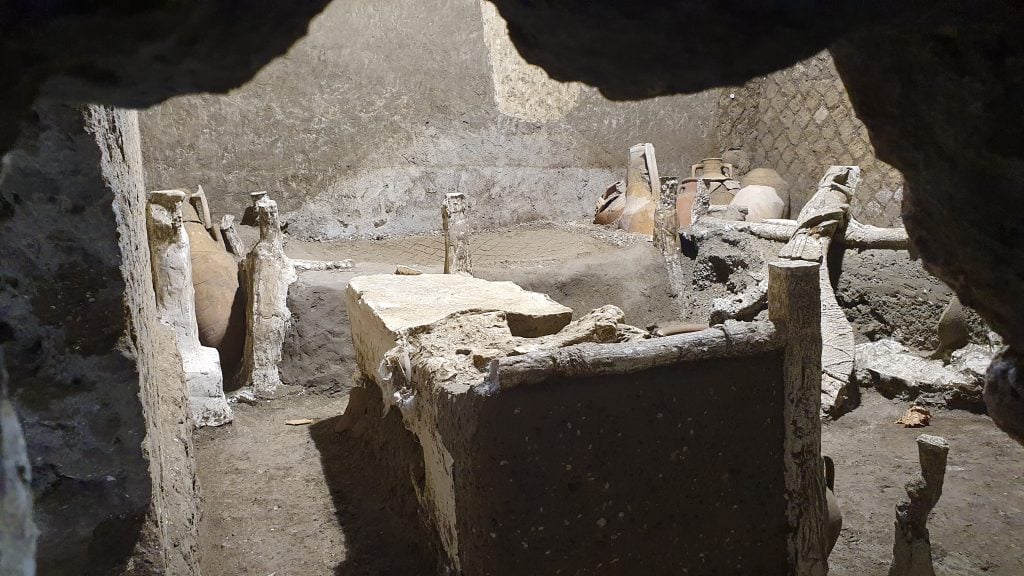In the year 79 A.D, the volcano Mount Vesuvius erupted and buried the Roman city of Pompeii in ashes. One witness described dust pouring over the land like a flood, spreading darkness over the population. Thousands of people died and no one returned to Pompeii for many years. However, when explorers came in 1748, they discovered the city intact, preserved by volcanic ash. Thus, Pompeii became a popular site for archeologists and experts to study. There, they learn what life must’ve been like in ancient times. Despite being studied for so long, Pompeii is still full of hidden treasures. And in 2021, archeologists found a secret ‘forbidden room’ that illuminated how slaves lived before the devastation

The Hidden Slave Room Discovered in PompeiiDuring this recent discovery, archeologists searched a villa just outside Pompeii. There, they found a hidden room with three wooden beds and other objects, like jars, pitchers, and a chamber pot. Slaves lived in it, who under Roman law was the property of others, not considered actually people.
“This new important discovery enriches our understanding of the everyday life of the ancient Pompeians, especially that class in society about which little is still known,” said Italy’s Culture Minister, Dario Franceschini.

This hidden “slave room” is in the ancient villa called Civita Giuliana. There, researchers found a ceremonial carriage and the remains of horses by the stables earlier this year. On top of the slaves’ beds was a wooden chest with metal and fabric pieces that could have been part of the harnesses for the horses. Meaning, the slaves must’ve taken care of the stables. Additionally, two of the beds were 5.6 feet long (1.7 meters) while the last one was 4.6 feet (1.4 meters) and probably meant for a child. Franceschini deduces an enslaved family resided in that room. It also doubled as a storage space with eight amphorae (tall Roman jars) found in the corners.
“This is a window into the precarious reality of people who seldom appear in historical sources,” said Gabriel Zuchtriegel, director general at The Archaeological Park of Pompeii. “It helps us to discover a part of the ancient world which we would otherwise know little about, but which is nonetheless extremely important.”

A Glimpse into the Lives of SlavesThe researchers became especially surprised by the smallness of the space at 16 square meters (172 square feet). “What is most striking is the cramped and precarious nature of this room, which was something between a dormitory and a storage room,” Zuchtriegel said. There was no sign of any type of decoration and the only source of sunlight could have come from a small window high on the wall.

Although historians knew that slavery essentially built the Roman Empire, how masters treated their slaves remained a mystery. This discovery is a rare peek into what life as a slave must’ve been like. The most famous historical accounts belonged to elite and wealthy men. So lower classes and slaves “risk remaining invisible in the great historical accounts,” Zuchtriegel said.
The researchers hope further analysis and excavation of the slave room will help learn more about slavery in the Roman Empire. “It is certainly one of the most exciting discoveries during my life as an archaeologist, even without the presence of great treasures,” Zuchtriegel said in the statement. “The true treasure here is the human experience in this case of the most vulnerable members of ancient society, to which this room is a unique testimony.”





